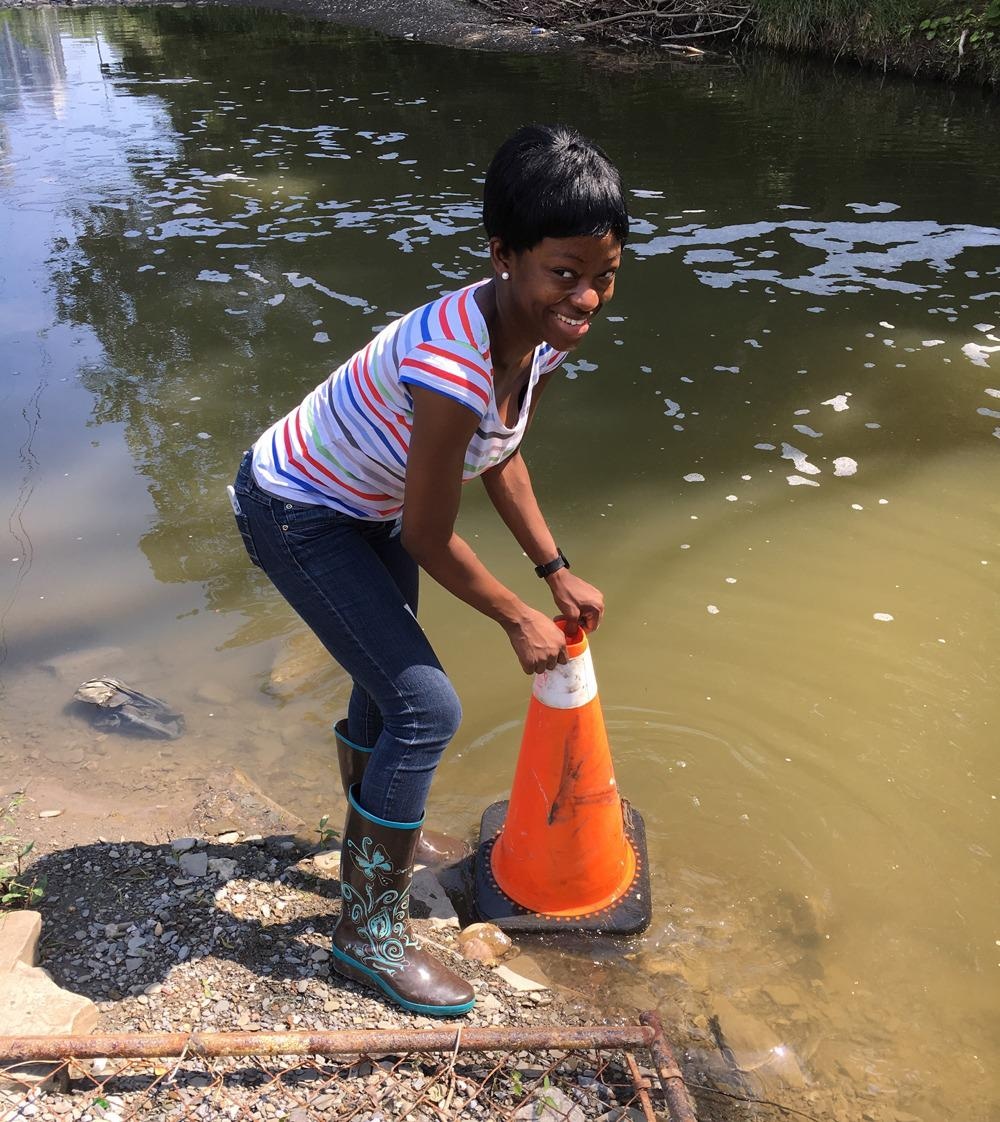Heavy traffic is time and again linked with air pollution. However, a new study from the University of Toronto, Scarborough, states it is also a huge contributor to water pollution.
 Tife Awonaike is a recent Ph.D. graduate from the Department of Physical and Environmental Science and the lead author of the study. Image Credit: Submitted by Tife Awonaike
Tife Awonaike is a recent Ph.D. graduate from the Department of Physical and Environmental Science and the lead author of the study. Image Credit: Submitted by Tife Awonaike
The research discovered that chemicals normally used in vehicle fluids, paints and tires were a lot higher in rivers adjacent to roads dealing with heavy traffic.
We found a strong relationship between traffic and the concentration of these chemicals. These roads also appear to be a major source of a surprisingly wide array of contaminants.
Tife Awonaike, Study Lead Author and PhD Graduate, Department of Physical and Environmental Science, University of Toronto, Scarborough
For the research, a series of samples were taken from the watersheds fed by Mimico Creek (which flows via Brampton, Mississauga and Toronto) and Little Rouge Creek (which flows via Whitchurch-Stoufville, Markham and Scarborough). The samples procured from Mimico Creek, which is situated adjacent to roads with a lot of traffic, had higher levels for the majority of the identified pollutants.
Many of the 35 various contaminants that were discovered in the watersheds originated from chemicals used in oils, windshield de-icing fluids, lubricants, tires, coatings, paints and vehicle furniture. When contaminants are discharged onto road surfaces, they are washed into adjacent streams when it rains, either while stuck to road dust or on their own, thereby finally winding up in neighboring watersheds.
The scientists learned that these contaminants are shifted to watersheds in similar ways, indicating they originate from a single, major source, i.e., road surfaces.
These pollutants should definitely not be in water used by humans and animals, according to the scientists. For instance, organophosphate esters, usually incorporated into materials as flame retardants, are said to be poisonous to marine organisms. Triphenyl phosphate, which is a kind of organophosphate applied in vehicle interiors, electronic equipment and upholstery, has been associated with neurotoxicity in fish.
Professor Frank Wania, the study’s co-author, says these pollutants add to what is referred to as the “urban stream syndrome,” whereby watersheds and rivers are contaminated from urban stormwater overflow.
Urban waters, in general, are not in good shape. They’re really a soup of a whole slew of contaminants.
Professor Frank Wania, Environmental Chemist and Study Co-Author, University of Toronto, Scarborough
Professor Frank Wania’s research explores how various organic chemicals wind up in the environment. He emphasizes that although they examined a number of chemicals as part of the research, it is probably “only a fraction” of what might be in the water.
“Let’s put it this way—places like the Mimico Creek are not very healthy bodies of water, and it would be very difficult for a healthy aquatic ecosystem to exist there.”
The research has been published in the Environmental Research Letters journal and has received funding from the Natural Sciences and Engineering Research Council of Canada.
What Can Be Done?
Using electric vehicles instead of fuel-based vehicles will not suffice. While some pollutants are directly associated with the combustion of fossil fuels, other pollutants found in paints, tire particles, coatings and de-icing fluids are also employed in electric vehicles.
Awonaike says a number of the pollutants used to make vehicles can only be regulated on a greater scale by regulatory organizations and governments. Regular sweeping of the street can help by gathering road dust before it gets carried away into waterways.
As an individual, certain activities can help this issue.
Regular maintenance of your vehicle is important. You can make sure to fix a leaky car or flaking paint chips. You can also raise awareness about this issue. We don’t want these contaminants ending up in our water where they can do quite a bit of damage to aquatic ecosystems.
Tife Awonaike, Study Lead Author and PhD Graduate, Department of Physical and Environmental Science, University of Toronto, Scarborough
Journal Reference:
Awonaike, B., et al. (2022) Traffic related sources may dominate urban water contamination for many organic contaminants. Environmental Research Letters. doi.org/10.1088/1748-9326/ac5c0e.